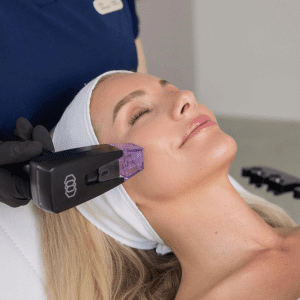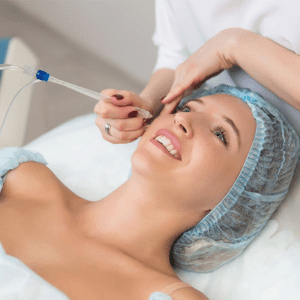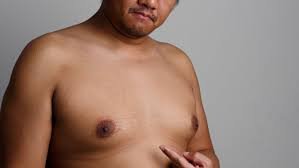
Understanding Gynecomastia: The Enlargement of the Male Breast
Men frequently develop breast tissue growth, which is known as gynaecomastia. The physical growth of enlarged breast tissue produces emotional suffering, body image problems, and social tension while creating single-sided or double-sided breast enlargement.
The staff at Rasa Derm fully understand the emotional aspect of this situation. Our team delivers both effective medical solutions and sensitive care to help men achieve a natural male breast tissue appearance.
What Is Gynecomastia
Gynaecomastia describes when male patients develop harmless breast tissue growth. The development of gynaecomastia occurs through an imbalance of testosterone and oestrogen levels. True gynaecomastia differs from fat accumulation through the development of glandular tissue yet can appear with fat tissue (pseudo-gynaecomastia).
The causes that lead to gynaecomastia are many and include the following:
- The condition of gynaecomastia commonly develops during puberty, while it usually disappears by itself.
- Glandular growth that develops in elderly men often relates to hormone changes in their bodies.
Medications
The medications that cause gynaecomastia include anabolic steroids and anti-androgens, as well as antidepressants, anti-ulcer medications, and chemotherapy agents.
- Kidney or liver disorders.
- Disorders of the thyroid gland.
- Trauma or testicular masses.
- Obesity, which elevates oestrogen levels
Use Of Substances
The condition of gynaecomastia is associated with alcohol consumption as well as the use of hashish, amphetamines, and heroin.
Medical researchers have yet to discover the origin of gynaecomastia when it occurs without any identifiable cause.
- The tissue that makes up the breast gland appears swollen.
- Thoracic pain or discomfort is felt.
- Breast girth shows unevenness.
- A firm or rubbery mass can be detected beneath the nipple.
You need to differentiate gynaecomastia from serious medical conditions like male breast cancer, which appears rarely, and adipose tissue accumulation (pseudo-gynaecomastia).
The prevention of gynaecomastia is possible in some cases, while the following measures can reduce its likelihood:
- The prevention of steroid and drug misuse.
- The establishment of hormonal equilibrium requires weight management.
- The recommendation for people with family histories of gynaecomastia or medical treatment includes routine health check-ups.
You should consult a medical professional when you notice swelling, tenderness, or enlargement in your chest area together with any sensation of a lump beneath the nipple. Rasa Derm provides complete evaluations through our dermatologists and aesthetic surgeons, which may include the following procedures:
- Examination of the body.
- The doctor performs blood tests to check hormone levels during the examination.
- A doctor may order imaging tests (ultrasound or mammography) based on the specific situation.
Treatments For Gynecomastia
Our centre provides nonsurgical treatment options, which depend on the extent and type of gynaecomastia. Our team designs treatments for both fat-based and glandular tissue to achieve natural-looking, confident results.
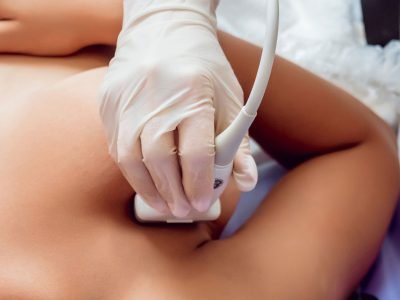
Radiofrequency (RF) Body Contouring
For patients with pseudo-gynecomastia (fat-related chest fullness).
- Session Duration: 30-45 minutes
- Sessions Required: 4–6 sessions
- Gaps Between Sessions: 1 session every 2 weeks
- Results: Progressive results over 6–8 weeks
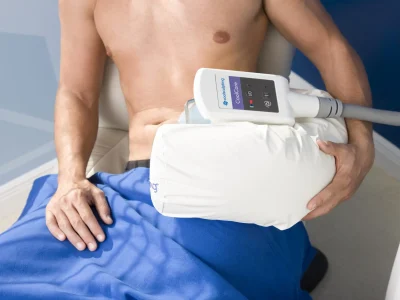
Cool Sculpting (Fat Freezing)
Cryolipolysis, commonly known as fat freezing, targets stubborn fat.
- Session Duration: 60 minutes
- Sessions Required: 1–2 sessions
- Gaps Between Sessions: 6–8 weeks
- Results In : Visible fat reduction in 6–12 weeks

Chemical Peels (Pigment Correction Peels)
Medical-grade peels exfoliate the upper layers of skin to remove pigment buildup.
- Session Duration: 20–30 minutes
- Sessions Required: 3–5 sessions
- Gaps Between Sessions: 2–3 weeks
- Results In : Brighter skin, Improved clarity
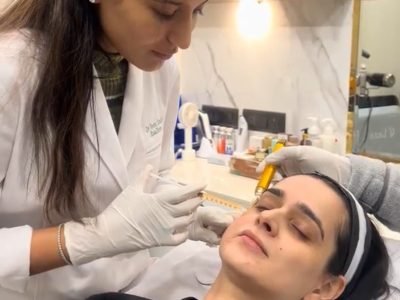
Vampire Facial
Advanced growth factors micro needling for active acne and texture improvement.
- Session Duration: 45–60 minutes
- Sessions Required: 3–4 sessions
- Gaps Between Sessions: 4–6 weeks
- Results In : Firmer, Youthful Skin






